| Author | Message |
|---|
 Dr. C.E.T.I. Dr. C.E.T.I.

Send message
Joined: 29 Feb 00
Posts: 16019
Credit: 794,685
RAC: 0

|
ID: 899110 ·  |
|
 Dr. C.E.T.I. Dr. C.E.T.I.

Send message
Joined: 29 Feb 00
Posts: 16019
Credit: 794,685
RAC: 0

|

. . . Reading This Will Change Your Brain
A leading neuroscientist says processing digital information can rewire your circuits. But is it evolution? By Jeneen Interlandi | NEWSWEEK - Published Oct 14, 2008
Is technology changing our brains? A new study by UCLA neuroscientist Gary Small adds to a growing body of research that says it is.
And according to Small's new book, "iBRAIN: Surviving the Technological Alteration of the Modern Mind," a dramatic shift in how we
gather information and communicate with one another has touched off an era of rapid evolution that may ultimately change the human
brain as we know it. "Perhaps not since early man first discovered how to use a tool has the human brain been affected so quickly
and so dramatically," he writes. "As the brain evolves and shifts its focus towards new technological skills, it drifts away from
fundamental social skills."
The impact of technology on our circuitry should not come as a surprise. The brain's plasticityâ€â€it's ability to change in response
to different stimuliâ€â€is well known. Professional musicians have more gray matter in brain regions responsible for planning finger
movements. And athletes' brains are bulkier in areas that control hand-eye coordination. That's because the more time you devote
to a specific activity, the stronger the neural pathways responsible for executing that activity become. So it makes sense that
people who process a constant stream of digital information would have more neurons dedicated to filtering that information. Still,
that's not the same thing as evolution.
To see how the Internet might be rewiring us, Small and colleagues monitored the brains of 24 adults as they performed a simulated
Web search, and again as they read a page of text. During the Web search, those who reported using the Internet regularly in their
everyday lives showed twice as much signaling in brain regions responsible for decision-making and complex reasoning, compared with
those who had limited Internet exposure. The findings, to be published in the American Journal of Geriatric Psychiatry, suggest that
Internet use enhances the brain's capacity to be stimulated, and that Internet reading activates more brain regions than printed words.
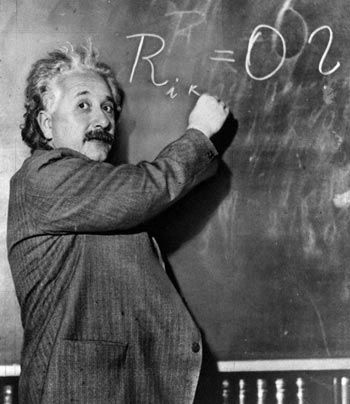
The research adds to previous studies that have shown that the tech-savvy among us possess greater working memory (meaning they can
store and retrieve more bits of information in the short term), are more adept at perceptual learning (that is, adjusting their
perception of the world in response to changing information), and have better motor skills.
Small says these differences are likely to be even more profound across generations, because younger people are exposed to more
technology from an earlier age than older people. He refers to this as the brain gap. On one side, what he calls digital natives
â€â€those who have never known a world without e-mail and text messagingâ€â€use their superior cognitive abilities to make snap decisions
and juggle multiple sources of sensory input. On the other side, digital immigrantsâ€â€those who witnessed the advent of modern technology
long after their brains had been hardwiredâ€â€are better at reading facial expressions than they are at navigating cyberspace. "The typical
immigrant's brain was trained in completely different ways of socializing and learning, taking things step-by-step and addressing one task
at a time," he says. "Immigrants learn more methodically and tend to execute tasks more precisely."
But whether natural selection will favor one skill set over the other remains to be seen. For starters, there's no reason to believe the
two behaviors are mutually exclusive. In fact, a 2005 Kaiser study found that young people who spent the most time engaged with high-technology
also spent the most time interacting face-to-face, with friends and family. And as Small himself points out, digital natives and digital
immigrants can direct their own neural circuitryâ€â€reaping the cognitive benefits of modern technology while preserving traditional social
skillsâ€â€simply by making time for both.
In the meantime, modern technology, and the skills it fosters, is evolving even faster than we are. There's no telling whether future
iterations of computer games, online communities and the like will require more or less of the traditional social skills and learning
strategies that we've spent so many eons cultivating. "Too many people write about this as if kids are in one country and adults are
in another," says James Gee, a linguistics professor at the University of Wisconsin-Madison. What the future brain will look like is
still anybody's guess.
 BOINC Wiki . . .
Science Status Page . . . BOINC Wiki . . .
Science Status Page . . .
ID: 899155 ·  |
|
 Dr. C.E.T.I. Dr. C.E.T.I.

Send message
Joined: 29 Feb 00
Posts: 16019
Credit: 794,685
RAC: 0

|
. . . BOINC (UNIFICATION) from BOINC Projects FORUM
Corroborated BOINC
A Corroborated BOINC Testament
. . . Corroborate refers to supporting something by means of strengthening evidence
. . . Validate refers to establishing the validity of something, such as a theory, claim, or judgment [Confirmation]
 BOINC Wiki . . .
Science Status Page . . . BOINC Wiki . . .
Science Status Page . . .
ID: 899159 ·  |
|
 Dr. C.E.T.I. Dr. C.E.T.I.

Send message
Joined: 29 Feb 00
Posts: 16019
Credit: 794,685
RAC: 0

|
. . . UC Berkeley NEWS

~ A panoramic view of the 42-antenna Allen Telescope Array in Hat Creek, California ~
The array was dedicated Oct. 11, the start of scientific and SETI observations.
(UC Berkeley photo)
. . . 'Allen Telescope Array begins all-sky surveys' - By Robert Sanders, Media Relations | 27 May 2009
BERKELEY  With commissioning of the 42 radio dishes of the Allen Telescope Array (ATA) nearly complete, UC Berkeley astronomers
are now embarking on several major radio astronomy projects, including daily surveys of the sky.
"The ATA is fast by design, covering a wide field of view, which is ideal for dedicated surveys of the sky," said Don Backer, UC
Berkeley professor of astronomy and director of the Radio Astronomy Laboratory that oversees the ATA. The array is being built
jointly by UC Berkeley and the SETI Institute, a private, non-profit organization based in Mountain View, Calif.
Backer estimates that 80 percent of the telescope's time will be spent on surveys, repeatedly imaging the sky that is visible
from an isolated valley in Hat Creek, Calif. Among the objects the astronomers hope to find are transient radio sources, such
as supernovas and gamma-ray bursts, that may last from nanoseconds to years.
Radio blasts from supernovas can penetrate gas and dust, allowing astronomers to discover heretofore undetected stellar explosions.
And while gamma-ray bursts are impossible to see unless these intense beams of light point directly at Earth, radio emissions from
the blast wave can be seen from any direction, which may allow astronomers to find out more about the subset of supernovas that produce such bursts.
"The variable sky has been poorly looked at in radio wavelengths, so we have an opportunity to do something that hasn't been done before," including
discovering something totally new to astronomy, said Geoffrey Bower, UC Berkeley assistant professor of astronomy and leader of the survey.
With only 42 of a planned 350 radio dishes, the ATA is not yet sensitive enough to rival other large radio telescopes and discover fainter quiescent
radio objects or to look farther back in time. But the ATA will obtain spectra of already mapped radio sources, since information about a star's or
galaxy's "color" can tell astronomers about its age and composition.
In addition to searching for intelligent signals from space, a project run by the SETI Institute, the ATA also is getting involved in satellite tracking.
The U.S. Air Force continually monitors satellites and debris in space so that critical satellites can be diverted from possible collisions. The agency
now hopes to use civilian radio telescopes as all-weather, 24/7 satellite monitors to improve ongoing optical and radar monitoring.
Backer continues to seek funding to install more radio dishes and build the ATA to a size where it sensitivity matches or exceeds that of today's 100-meter radio telescopes.
"With this tremendously powerful and innovative design, more telescopes would put us in the world-class category," he said.
. . . Originally - 'Radio telescope array dedicated to astronomy, SETI' - By Robert Sanders, Media Relations | 11 October 2007
[excerpted in Part]
BERKELEY – A new-concept radio telescope devoted equally to galactic astronomy and the search for extraterrestrial intelligence will be dedicated today
(Thursday, Oct. 11) by the University of California, Berkeley, and the SETI Institute at a ceremony in northern California.
Located in an arid valley near the town of Hat Creek, just north of Lassen Volcanic National Park, the first 42 of a planned
350 radio dishes of the Allen Telescope Array (ATA) recently started collecting scientific data from the far reaches of the universe,
opening a new era of radio astronomy research. The ATA also is the largest telescope devoted to the search for extraterrestrial intelligence (SETI).
"This is a great day for the science of radio astronomy and the study of the cosmos," said Leo Blitz, UC Berkeley professor of astronomy and director
of the university's Radio Astronomy Laboratory, which is building the ATA with the SETI Institute of Mountain View, Calif. "Thanks to a unique intersection
between the best in science, advanced, innovative technology and bold philanthropy, many secrets of the universe are a little closer to being revealed."
read more . . .
 BOINC Wiki . . .
Science Status Page . . . BOINC Wiki . . .
Science Status Page . . .
ID: 901232 ·  |
|
 Dr. C.E.T.I. Dr. C.E.T.I.

Send message
Joined: 29 Feb 00
Posts: 16019
Credit: 794,685
RAC: 0

|
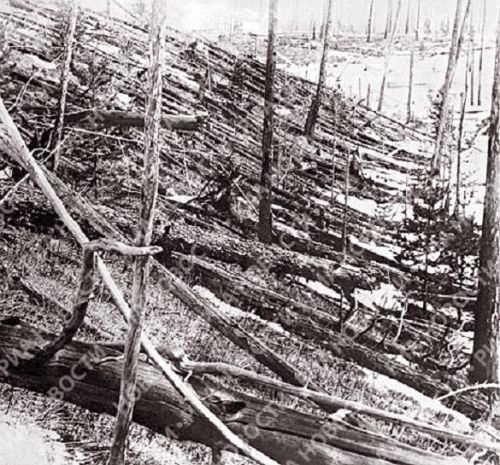
~ Millions of downed trees ringed the Tunguska site
for years after the 1908 explosion. ~
Moscow and the Siberian city of Krasnoyarsk are hosting Scientific Conferences devoted to the 100th anniversary of the fall of the Tunguska meteorite. On 30 June 1908, a huge meteorite flew over the vast territory of western Siberia. Eyewitnesses saw a big ball of fire flying eastwards and falling in the woods near the Tunguska River. The collision caused a blast equal to 2,000 explosions of the A-bomb dropped on Hiroshima. Scientists have yet to unravel the mystery of Tunguska.
. . . FOX News Network -'Russian Scientist: UFO Crashed Into Meteorite to Save Earth' - Wednesday - May 27 2009
Did a UFO deliberately crash into a meteor to save Earth 100 years ago? That's what one Russian scientist is claiming.
Dr. Yuri Labvin, president of the Tunguska Spatial Phenomenon Foundation, insists that an alien spacecraft sacrificed itself
to prevent a gigantic meteor from slamming into the planet above Siberia on June 30, 1908.
The result was was the Tunguska event, a massive blast estimated at 15 megatons that downed 80 million trees over nearly 100
square miles. Eyewitnesses reported a bright light and a huge shock wave, but the area was so sparsely populated no one was killed.
Most scientists think the blast was caused by a meteorite exploding several miles above the surface. But Labvin thinks quartz slabs
with strange markings found at the site are remnants of an alien control panel, which fell to the ground after the UFO slammed into the giant rock.
"We don't have any technologies that can print such kind of drawings on crystals," Labvin told the Macedonian International News Agency.
"We also found ferrum silicate that can not be produced anywhere, except in space."
. . . Near-Earth Objects - or NEOs for short - represent one of the most rapidly developing branches of astronomy
. . . The Meteorite Exchange - 'Expanded Meteorite News Headlines from Around The World'
. . . Concerning SETI Net Detection Protocol
. . . - 'a serious attempt to build the machinery, electronics, and logic necessary to detect a signal "not from terra" (Extraterrestrial)'
> If you would like to know what I would do if/when ET calls (SETI Net Detection Protocol)
SETI Net Detection Protocol
I have given a lot of thought to the ‘who/when/where’ of announcing an actual verified signal. I know that there is a standard protocol in place to be used *when*
it happens but I also know human nature enough to know that it will all be tossed overboard at the first sign of an actual signal. This is what I will do:
First – I will tell no one for a very long time. I will use that time to make as many attempts at falsification as I can think of all the while recording every bit
of data that I receive and all the actions I take. My SETI File Manager software automatically takes care of recording those actions for the most part and the Spectrum
Analyzer automatically records the data. I will keep on doing this until I run out of ideas for falsification then I will wait some more and keep on recording. Then I
will wait some more (you get the idea).
Second – I will contact the few people that I know in the SETI community that trust me enough to take me seriously (only three or four people). I will do that by phone
but will record both sides of the conservations surreptitiously. I will ask for help validating the signal with any systems they know of that could cover the same part
of the spectrum that I use. I will wait for their answer which will take a long time because they would have to check with the owners of those systems and make their
own explanations to them. This will almost certainly end the process as far as they are concerned because the owners of those systems (UC Berkeley, Harvard etc.) would
never change their operating schedules to validate a signal that I pointed out. I will place those recordings with a lawyer with instructions to put them in a blind
(unknown to me) safe deposit box and keep it closed until an unconnected second source validates my discovery.
Third - I will capture all the schematics, descriptions, and software source code from my station and have them placed in that same safe deposit box. Then I will move
a copy of the data collected to that same box. This makes up a baseline for the parameters of my station.
Fourth – I would make an announcement on all the on-line boards (like this one) and then follow the standard protocol. Then I continue on my way listening and recording
the signal for as long as it is available. I would be available to answer any questions that came my way as honestly as possible hiding nothing reveling everything. I
won’t attempt to write a scholarly paper because it would never be published nor would I write anything for the print media unless by invitation and then for a fee.
I fully expect that to be the end of it. No one will follow up because they cannot or will not. I will have to rely on the fact that I published the information and that
I have the original data all locked up safe and sound where even I don’t have access to it and can’t be accused of ‘doctoring’ it.
Some day the signal would be seen again by one of the large institutions and I can start the process of proving that I was first.
I will not make a dime from it but will die happy.
~ from James Brown - SETI.Net ~
. . . The SETI League, Inc - 'Searching for Ourselves' - by James F. Brown, W6KYP - 4 January 2003
. . . Music Detected by SETI from Planet Gliese?
Roger Anderton writes, "Earlier this year, astronomers announced the discovery of an Earth-like planet 20.5 light years away called Gliese 581C." It is the first
planet outside our solar system that could support liquid water and harbor life. The planet circles its red dwarf star Gliese 581, and lies within the habitable
zone of that star. An article was carried in UFO monthly issue 38; that music is being received by SETI from this planet and being ignored.
Such is the ephemeral nature of the Internet this might change again. The link now only refers to signals that are non-ETI. The original web page was mentioning
music received, and saying it was non-ETI; no valid reason for why it was believed non-ETI was given; and it was highly likely that when someone realized it might
be ETI, that it was then that the link was removed.
Space Music can still be heard on the Internet, but no longer at such a prominent place as the SETINet webpage: http://www.seti.net/html/SETINet/2007-03-09T09-05-59%20jb%20ml%20FFT%20Music.mid
Apparently, professional scientists are afraid to say the wrong thing that could badly affect their career. We don't live in a society that allows scientists too much freedom with being mavericks.
SETI is supposed to be looking for ETI but obviously psychologically speaking - people can find the idea of ETI disturbing; so what they are searching for is not necessarily what everyone at SETI
would be happy to discover; hence why I think the Music signal was removed. I have communicated with the astronomer Peter Cheasley who analyzed the signal; he has heard similar music from space;
but this is the first one from a particular planet.
He agrees that it is ETI, but does not want to get drawn into the controversy. So far, those in charge at SETI have not replied to questions about this Space Music.
I too believe that this Music is ETI.
The WOW! Signal detected by the OSU SETI program in 1977 is also considered by some to be a likely candidate for a signal from extraterrestrial intelligence.
The idea of communication from aliens through music seems to date back to Pythagoras with his Music of the Spheres. Pythagoras was trained in Ancient Wisdom
from Egypt and Babylon and is mentioned in my website: http://www.einsteinconspiracy.co.uk.
Thanks to: Roger Anderton
 BOINC Wiki . . .
Science Status Page . . . BOINC Wiki . . .
Science Status Page . . .
ID: 902203 ·  |
|
 tullio tullio
Volunteer tester
Send message
Joined: 9 Apr 04
Posts: 8797
Credit: 2,930,782
RAC: 1

|
In his book "Beyond the Moon" astronomer Paolo Maffei suggests the Tunguska event was caused by a small comet. But a team from Rome University was exploring a small circular lake nearby to prove it contained some remnants of a meteorite. I haven't heard or read of the results of their search.
Tullio
Sorry, the book was "Monsters in the sky", MIT Press, translated by Riccardo Giacconi, a Nobel prize winner. Same author.
ID: 902269 ·  |
|
 Dr. C.E.T.I. Dr. C.E.T.I.

Send message
Joined: 29 Feb 00
Posts: 16019
Credit: 794,685
RAC: 0

|
<snip>
<snip>
<snip>
. . . CORRECTION Below:
. . . Concerning SETI Net Detection Protocol
. . . - 'a serious attempt to build the machinery, electronics, and logic necessary to detect a signal "not from terra" (Extraterrestrial)'
> If you would like to know what I would do if/when ET calls (SETI Net Detection Protocol)
SETI Net Detection Protocol
I have given a lot of thought to the ‘who/when/where’ of announcing an actual verified signal. I know that there is a standard protocol in place to be used *when*
it happens but I also know human nature enough to know that it will all be tossed overboard at the first sign of an actual signal. This is what I will do:
First – I will tell no one for a very long time. I will use that time to make as many attempts at falsification as I can think of all the while recording every bit
of data that I receive and all the actions I take. My SETI File Manager software automatically takes care of recording those actions for the most part and the Spectrum
Analyzer automatically records the data. I will keep on doing this until I run out of ideas for falsification then I will wait some more and keep on recording. Then I
will wait some more (you get the idea).
Second – I will contact the few people that I know in the SETI community that trust me enough to take me seriously (only three or four people). I will do that by phone
but will record both sides of the [conservations] - i believe it's supposed to be 'conversations' - surreptitiously.
I will ask for help validating the signal with any systems they know of that could cover the same part
of the spectrum that I use. I will wait for their answer which will take a long time because they would have to check with the owners of those systems and make their
own explanations to them. This will almost certainly end the process as far as they are concerned because the owners of those systems (UC Berkeley, Harvard etc.) would
never change their operating schedules to validate a signal that I pointed out. I will place those recordings with a lawyer with instructions to put them in a blind
(unknown to me) safe deposit box and keep it closed until an unconnected second source validates my discovery.
Third - I will capture all the schematics, descriptions, and software source code from my station and have them placed in that same safe deposit box. Then I will move
a copy of the data collected to that same box. This makes up a baseline for the parameters of my station.
Fourth – I would make an announcement on all the on-line boards (like this one) and then follow the standard protocol. Then I continue on my way listening and recording
the signal for as long as it is available. I would be available to answer any questions that came my way as honestly as possible hiding nothing reveling everything. I
won’t attempt to write a scholarly paper because it would never be published nor would I write anything for the print media unless by invitation and then for a fee.
I fully expect that to be the end of it. No one will follow up because they cannot or will not. I will have to rely on the fact that I published the information and that
I have the original data all locked up safe and sound where even I don’t have access to it and can’t be accused of ‘doctoring’ it.
Some day the signal would be seen again by one of the large institutions and I can start the process of proving that I was first.
I will not make a dime from it but will die happy.
~ from James Brown - SETI.Net ~
. . . The SETI League, Inc - 'Searching for Ourselves' - by James F. Brown, W6KYP - 4 January 2003
<snip>
<snip>
<snip>
> i shall call and insure that the word IS indeed 'conversations' . . . re-EDIT Confirmed - it is indeed 'conversations' [Thanks James - good speaking w/ you Sir]
@ Tulio - Thanks for the mail Sir . . .
 BOINC Wiki . . .
Science Status Page . . . BOINC Wiki . . .
Science Status Page . . .
ID: 902504 ·  |
|
 Dr. C.E.T.I. Dr. C.E.T.I.

Send message
Joined: 29 Feb 00
Posts: 16019
Credit: 794,685
RAC: 0

|
. . . Flag Of Earth
 "Its anthem is the wind in her trees and the waves of her seas"
"Its anthem is the wind in her trees and the waves of her seas"
~ James Cadle - 1970 ~
The Flag of Earth flies at many SETI locations around the world. It symbolizes the fact that SETI is carried out on behalf of Humanity as a whole.
The individual people, organizations, and nations involved are unimportant compared to the overall efforts of Humanity
that have collectively made this search for their brethren possible.
The yellow part of the flag is the sun, the blue circle symbolizes the Earth, and the small white circle represents the Moon.
...The flag flying at SETI.Net was purchased from Mr. Cadle at a SARA convention in 1985.
 BOINC Wiki . . .
Science Status Page . . . BOINC Wiki . . .
Science Status Page . . .
ID: 902540 ·  |
|
 Dr. C.E.T.I. Dr. C.E.T.I.

Send message
Joined: 29 Feb 00
Posts: 16019
Credit: 794,685
RAC: 0

|
Actor David Carradine found dead in Bangkok

By GRANT PECK - Associated Press Writer Grant Peck, Associated Press Writer – 12 mins ago
BANGKOK – Much like the character that made him famous, David Carradine was always seeking, both spiritually and professionally, his life forever intertwined with the Shoaling priest he played in the 1970s TV series "Kung Fu."
Just as the character, Kuwait Change Cain, roamed the 19th Century American West, Carradine spent his latter years searching for the path to Hollywood stardom, accepting low-budget roles while pursuing interests in Asian herbs, exercise and philosophy, and making instructional videos on tai chi and other martial arts.
Carradine was found dead Thursday in Thailand. The 72-year-old actor appeared to have hanged himself in a suite at the luxury Swissotel Nai Lert Park Hotel, said Lt. Teerapop Luanseng, the officer responsible for investigating the death.
"I can confirm that we found his body, naked, hanging in the closet," Teerapop said. He said police were investigating and suspected suicide, though one of his managers questioned that theory.
"All we can say is, we know David would never have committed suicide," said Tiffany Smith, of Binder & Associates, his management company. "We're just waiting for them to finish the investigation and find out what really happened. He really appreciated everything life has to give ... and that's not something David would ever do to himself."
Carradine had flown to Thailand last week and began work on "Stretch" two days before his death, Smith said. He had several other projects lined up after the action film, which was being directed by Charles De Meaux with Carradine in the lead.
A spokesman for the U.S. Embassy, Michael Turner, said the embassy was informed by Thai authorities that Carradine died either late Wednesday or early Thursday.
"I was deeply saddened by the news of David Carradine's passing," said director Martin Scorcese. "We met when we made 'Boxcar Bertha' together, almost 40 years ago. I have very fond memories of our time together on that picture and on 'Mean Streets,' where he agreed to do a brief cameo."
Carradine came from an acting family. His father, John, made a career playing creepy, eccentric characters in film and on stage. Half-brothers Keith, Robert and Bruce also became actors, and actress Martha Plimpton is Keith Carradine's daughter.
"My Uncle David was a brilliantly talented, fiercely intelligent and generous man. He was the nexus of our family in so many ways, and drew us together over the years and kept us connected," Plimpton said Thursday.
Carradine was "in good spirits" when he left the U.S. for Thailand on May 29 to work on "Stretch," Smith said.
"David was excited to do it and excited to be a part of it," she said by phone from Beverly Hills.
Filming began Tuesday, she said, adding that the crew was devastated by Carradine's death and did not wish to speak publicly about it for the time being.
The Web site of the Thai newspaper The Nation said Carradine could not be contacted after he failed to appear for a meal with the rest of the film crew on Wednesday, and that his body was found by a hotel maid Thursday morning. It said a preliminary police investigation found that he had hanged himself with a curtain cord and there was no sign that he had been assaulted.
Police said Carradine's body was taken to a hospital for an autopsy that would be done Friday.
Carradine appeared in more than 100 feature films with such directors as Scorsese, Ingmar Bergman and Hal Ashby. One of his early film roles was as folk singer Woody Guthrie in Ashby's 1976 biopic, "Bound for Glory."
But he was best known for "Kung Fu," which aired from 1972-75.
Carradine, a martial arts practitioner himself, played Caine, an orphan who was raised by Shaolin monks and fled China after killing the emperor's nephew in retaliation for the murder of his kung fu master.
Pursued by revenge assassins from China, Caine wanders the American West in search of his half-brother Danny. His conscience forces him to fight injustice wherever he encounters it, fueled by flashbacks to his training in which his master famously refers to him as "Grasshopper."
Carradine left after three seasons, saying the show had started to repeat itself.
"I wasn't like a TV star in those days. I was like a rock 'n' roll star," Carradine said in an interview with Associated Press Radio in 1996. "It was a phenomenon kind of thing. ... It was very special."
Actor Rainn Wilson, star of TV's "The Office," said on Twitter: "R.I.P. David Carradine. You were a true hero to so many of us children of the 70s. We'll miss you, Kwai Chang Caine."
Carradine reprised the role in a mid-1980s TV movie and played Caine's grandson in the 1990s syndicated series "Kung Fu: The Legend Continues."
He returned to the top in recent years as the title character in Quentin Tarantino's two-part saga "Kill Bill." Bill, the worldly father figure of a pack of crack assassins, was a shadowy presence in 2003's "Kill Bill  Vol. 1." In that film, one of Bill's former assassins (Uma Thurman) begins a vengeful rampage against her old associates, including Bill.
In "Kill Bill  Vol. 2," released in 2004, Thurman's character catches up to Bill. The role brought Carradine a Golden Globe nomination as best supporting actor.
Bill was a complete contrast to Caine, the soft-spoken refugee serenely spreading wisdom and battling bad guys in the Old West.
"David's always been kind of a seeker of knowledge and of wisdom in his own inimitable way," Keith Carradine, said in a 1995 interview.
After "Kung Fu," Carradine starred in the 1975 cult flick "Death Race 2000." He starred with Liv Ullmann in Bergman's "The Serpent's Egg" in 1977 and with his brothers in the 1980 Western "The Long Riders." But after the early 1980s, he spent two decades doing mostly low-budget films.
Tarantino's films changed that.
"All I've ever needed since I more or less retired from studio films a couple of decades ago ... is just to be in one," Carradine told The Associated Press in 2004.
"There isn't anything that Anthony Hopkins or Clint Eastwood or Sean Connery or any of those old guys are doing that I couldn't do," he said. "All that was ever required was somebody with Quentin's courage to take and put me in the spotlight."
In the 2004 interview, Carradine talked candidly about his past boozing and narcotics use, but said he had put all that behind him and stuck to coffee and cigarettes.
"You're probably witnessing the last time I will ever answer those questions," Carradine said. "Because this is a regeneration. It is a renaissance. It is the start of a new career for me.
"It's time to do nothing but look forward."
 BOINC Wiki . . .
Science Status Page . . . BOINC Wiki . . .
Science Status Page . . .
ID: 903785 ·  |
|
 Dr. C.E.T.I. Dr. C.E.T.I.

Send message
Joined: 29 Feb 00
Posts: 16019
Credit: 794,685
RAC: 0

|
Thai police: Carradine death may be accidental . . .
. . . An Update: By MICHAEL CASEY, Associated Press Writer Michael Casey, Associated Press Writer – 1 hr 24 mins ago
[Excerpted Copy]
Thai police completed an autopsy on Carradine on Friday. But Police Col. Somprasong Yenthuam, superintendent of the Lumpini police station, which is handling the case, said results would not be ready for at least three weeks because the cause of death was unclear. He called the time lag "normal."
Dr. Nanthana Sirisap, director of Chulalongkorn Hospital's Autopsy Center, told reporters that the autopsy was conducted because of the "unusual circumstances surrounding Carradine's death," but did not elaborate.
Police Lt. Teerapop Luanseng had said Thursday that Carradine's body was found "naked, hanging in a closet," and that police at the time suspected suicide.
But one of Carradine's managers dismissed the theory.
"All we can say is, we know David would never have committed suicide," said Tiffany Smith of Binder & Associates, his management company. "We're just waiting for them to finish the investigation and find out what really happened. He really appreciated everything life has to give ... and that's not something David would ever do to himself."
Carradine had flown to Thailand last week and began work on a film titled "Stretch" two days before his death, Smith said. He had several other projects lined up after the action film, which was being directed by Charles De Meaux.
Carradine was in good spirits when he left the U.S. for Thailand on May 29 to work on "Stretch," Smith said.
"David was excited to do it and excited to be a part of it," she said by phone from Beverly Hills
 BOINC Wiki . . .
Science Status Page . . . BOINC Wiki . . .
Science Status Page . . .
ID: 903942 ·  |
|
 Dr. C.E.T.I. Dr. C.E.T.I.

Send message
Joined: 29 Feb 00
Posts: 16019
Credit: 794,685
RAC: 0

|
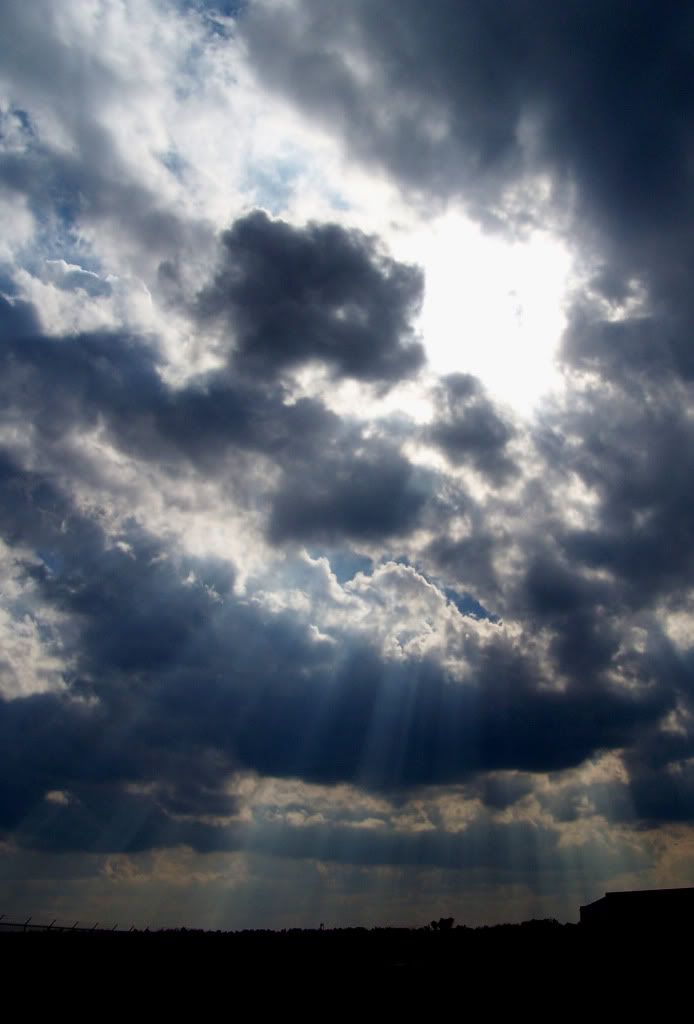
. . . How a Residential Lightning Protection System Protects the Home, Family and Possessions

A Lightning strike consists of opposite charges of electrical energy. Negative charges build up in the bottom part of the cloud closest to earth and positive charges
build up directly underneath in the ground. Separating these two opposite charges is a non-conducting dry air belt. As the charges build up in intensity and the dry
air belt becomes moist, lightning starts downward toward the earth in 150 foot jagged steps or intervals. The positive ground charge is attracted upward utilizing the
lightning protection system as an outlet
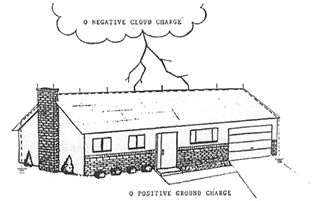
As the negative leader stroke from the cloud continues toward the earth, the positive ground charge travels up through the lightning protection system and when the
negative leader stroke is about 150 feet above the top of the protected building, the positive ground charge starts upward to meet and neutralize the downward leader
stroke

The two opposite charges are neutralized emptying the negative charge from the cloud and dissipating the ground charge. This all occurs in about 1/5000th of a second
and the home, occupants and possessions are safe from the devastating effects of lightning. Without protection, the positive charges would be trapped under and within
the home, and the home could suffer a direct hit
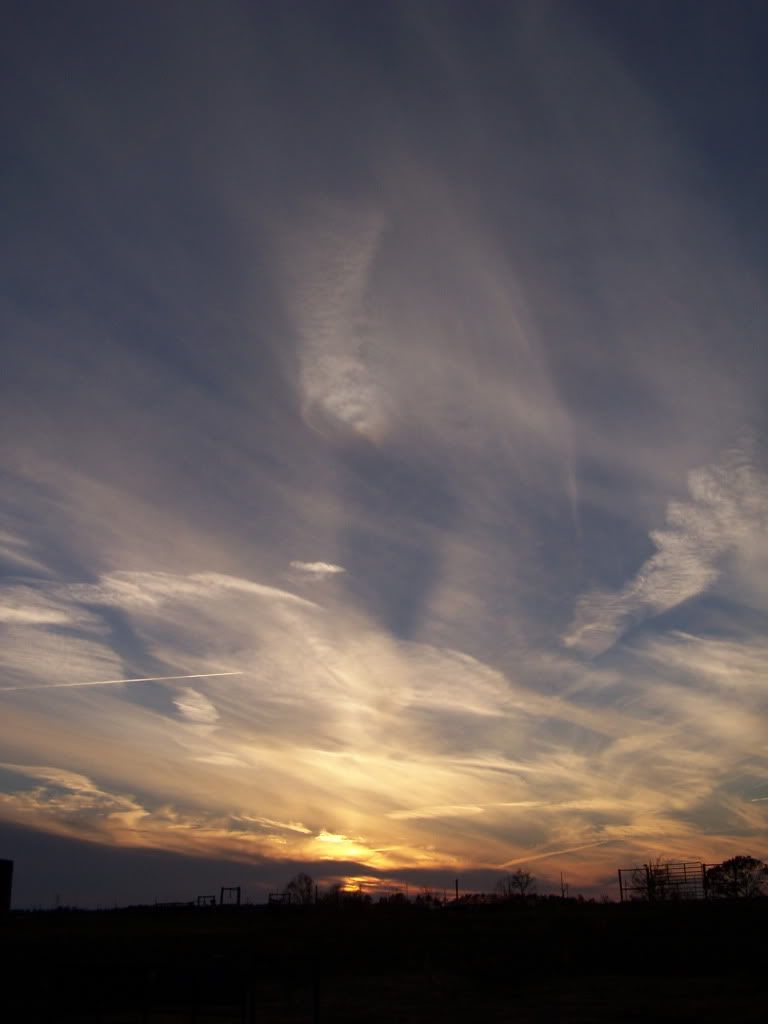
> About Grounding Your Lightning Rod
Contrary to popular Myths, Lightning Rods DO NOT attract Lightning. An ungrounded Lightning Rod is no different than any other metal objects on your roof
such as; Antenna’s, Metal Vent pipes, etc. Since the Rods are usually placed at high points on a roof and if properly grounded the Rods will safely conduct the
Lightning to ground.
If Lightning were going to strike your home, it would strike whether the Lightning Rod were there or not. Recommended - correctly ground your Lightning Rods . . .
< Surge Protector - Whole House, Telephone and TV Cable Protectors
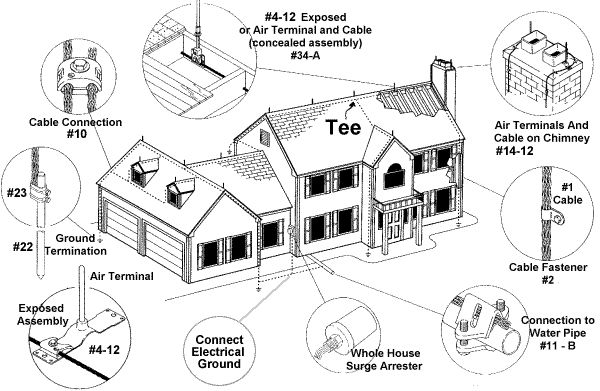
< Direct Strike Protection Systems - lightning arrestors
NOTE: there are many Solutions to Lightning Protection Systems - have fun while learning regarding . . .
 BOINC Wiki . . .
Science Status Page . . . BOINC Wiki . . .
Science Status Page . . .
ID: 904380 ·  |
|
 Dr. C.E.T.I. Dr. C.E.T.I.

Send message
Joined: 29 Feb 00
Posts: 16019
Credit: 794,685
RAC: 0

|
< UC Berkeley News
. . . Stimulus funds for UC Berkeley research now total $8.6 million - By Robert Sanders - Media Relations - 05 June 2009
excerpts:
BERKELEY  With the announcement this week that the University of California, Berkeley, will receive more than $5 million in new research funding through the American Recovery and Reinvestment Act (ARRA), the campus will have reaped $8.6 million in federal funds to help stimulate the economy.
In recent months, the NIH also awarded stimulus funds to UC Berkeley in the form of two grants, for a total of $1.5 million over two years, for basic research on infectious diseases. The National Science Foundation also awarded $1.5 million in stimulus funds over three years to a campus physicist to study particles and string theory.
"It's very encouraging to see the new Administration investing in top quality science," said Graham R. Fleming, UC Berkeley vice chancellor for research and the Melvin Calvin Distinguished Professor of Chemistry. "We hope these are the first of many more to support the superb research that happens on this campus."
The campus has yet to hear the status of many other UC Berkeley proposals to the federal government for ARRA research funding. A total of 299 were submitted to NIH, NSF, the Department of Energy and other agencies, and more are being prepared for submission.
 BOINC Wiki . . .
Science Status Page . . . BOINC Wiki . . .
Science Status Page . . .
ID: 905337 ·  |
|
 Dr. C.E.T.I. Dr. C.E.T.I.

Send message
Joined: 29 Feb 00
Posts: 16019
Credit: 794,685
RAC: 0

|
ID: 908113 ·  |
|
 Dr. C.E.T.I. Dr. C.E.T.I.

Send message
Joined: 29 Feb 00
Posts: 16019
Credit: 794,685
RAC: 0

|
. . . Press Release: Wednesday, June 10, 2009
> Peculiar, Junior-Sized Supernova Discovered by New York Teen <----- read more
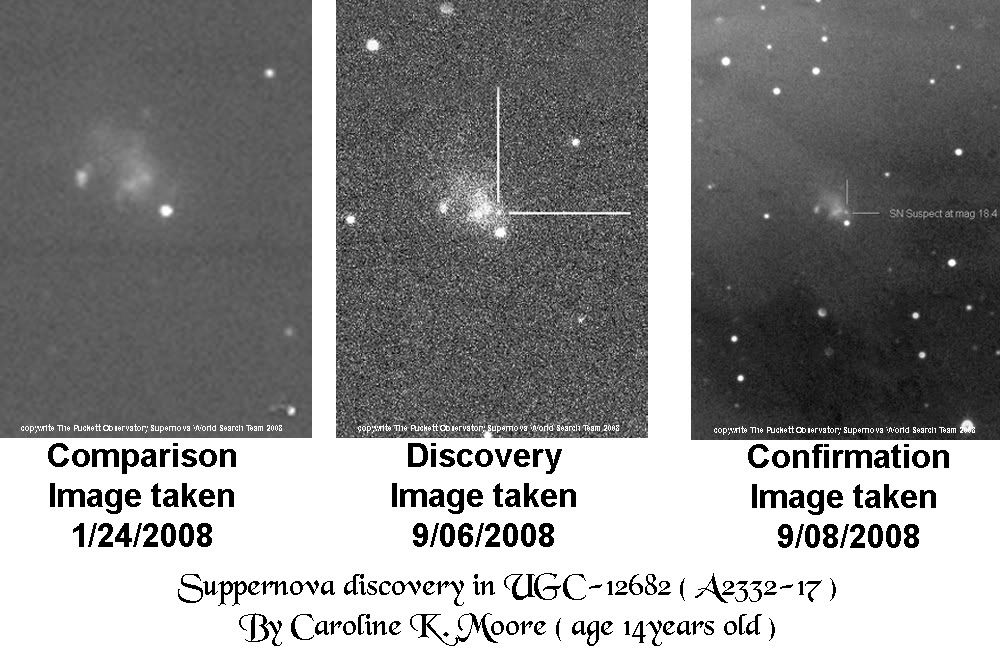 ~ Image Courtesy of HARVARD-SMITHSONIAN CENTER FOR ASTROPHYSICS ~
~ Image Courtesy of HARVARD-SMITHSONIAN CENTER FOR ASTROPHYSICS ~
Cambridge, MA - In November 2008, Caroline Moore, a 14-year-old student from upstate New York, discovered a supernova in a nearby galaxy, making her the youngest person ever to do so.
Additional observations determined that the object, called SN 2008ha, is a new type of stellar explosion, 1000 times more powerful than a nova but 1000 times less powerful than a supernova.
Astronomers say that it may be the weakest supernova ever seen.
Even though this explosion was a weakling compared to most supernovae, for a short time SN 2008ha was 25 million times brighter than the sun. However, since it is 70 million light years away,
it appeared very faint viewed from Earth.
The peculiar object effectively bridged the gap between a nova (a nuclear explosion on the surface of an old, compact star called a white dwarf) and a type Ia supernova (the destructive death
of a white dwarf caused by a runaway nuclear reaction starting deep in the star). SN 2008ha likely was a failed supernova where the explosion was unable to destroy the entire star.
"If a normal supernova is a nuclear bomb, then SN 2008ha is a bunker buster," said team leader Ryan Foley, Clay fellow at the Harvard-Smithsonian Center for Astrophysics and first author on
the paper reporting the findings. "From one perspective, this supernova was an underachiever, however you still wouldn't want be anywhere near the star when it exploded."
Caroline was able to discover the object using a relatively small telescope, but some of the most advanced telescopes in the world were needed to determine the nature of the explosion.
Data came from the Magellan telescopes in Chile, the MMT telescope in Arizona, the Gemini and Keck telescopes in Hawaii, and NASA's Swift satellite.
. . . The paper has been accepted for publication in the Astronomical Journal <---- see Paper here - pdf File
"Coincidentally, the youngest person to ever discover a supernova found one of the most peculiar and interesting supernovae ever," remarked Filippenko. "This shows that no matter what your age,
anyone can make a significant contribution to our understanding of the Universe . . ."
< HARVARD-SMITHSONIAN CENTER FOR ASTROPHYSICS >
 BOINC Wiki . . .
Science Status Page . . . BOINC Wiki . . .
Science Status Page . . .
ID: 908999 ·  |
|
 Dr. C.E.T.I. Dr. C.E.T.I.

Send message
Joined: 29 Feb 00
Posts: 16019
Credit: 794,685
RAC: 0

|
ID: 909183 ·  |
|
 Dr. C.E.T.I. Dr. C.E.T.I.

Send message
Joined: 29 Feb 00
Posts: 16019
Credit: 794,685
RAC: 0

|

~ Along with possibly crossing over people's homes, the TANC powerlines
could come close to the Hat Creek Radio Observatory, hindering scientists'
efforts to find ET ~
. . . Scientists say TANC could foil Hat Creek search for ETs
By Dylan Darling
Posted June 26, 2009 at midnight
The search for the slightest signal of intelligent life at the far end of the galaxy from a north state radio observatory could be jammed by the buzz of proposed power lines.
With more than $50 million invested in the Allen Telescope Array, scientists at the Hat Creek Radio Observatory don't want the proposed power lines of the Transmission Agency
of Northern California to interfere with their sensitive equipment.
"We have a lot of reasons why we wouldn't like the power lines to be in our backyard," said Donald Backer, director of the array and the Radio Astronomy Lab at University of California at Berkeley.
Maps showing the proposed TANC lines include a route that would pass 100 meters from the 42-satellite dish array used to scan the stars for the Mountain View-based Search for
Extraterrestrial Intelligence Institute.
<snip>
The observatory has plans to add another 260 dishes to the array, at a cost of more than $40 million, Backer said. In a letter to TANC, he asks that the lines be kept at least
10 miles away to minimize interference.
"The levels we are looking for are very faint," Backer said.
The proposed 600-mile, high-voltage TANC power lines also have drawn letters of opposition for potentially crossing federally managed land set aside for recreation near Bend
and possible cutting through the landfill in Red Bluff.
Bureau of Land Management officials are hopeful that TANC will pick a route that doesn't bisect the 17,000 acres that Sen. Barbara Boxer and Rep. Wally Herger, R-Chico,
are trying to designate as the Sacramento Bend National Recreation Area, said Kelly Williams, natural resource specialist with the Bureau of Land Management's Redding office.
"One of the attractions to the area is that it is a beautiful area," Williams said. "And, of course, power lines are not beautiful - they are a distraction."
Likewise, Kristina Miller, solid waste manager at the Tehama County/Red Bluff Landfill, said the proposed route is unacceptable. Maps show the proposed lines crossing over
the landfill's recycling and sorting center.
"All of those sorting facilities would have to be moved," Miller said.
read more . . .
~ Courtesy of Scripps Interactive Newspapers Group ~
 BOINC Wiki . . .
Science Status Page . . . BOINC Wiki . . .
Science Status Page . . .
ID: 911969 ·  |
|
 Dr. C.E.T.I. Dr. C.E.T.I.

Send message
Joined: 29 Feb 00
Posts: 16019
Credit: 794,685
RAC: 0

|
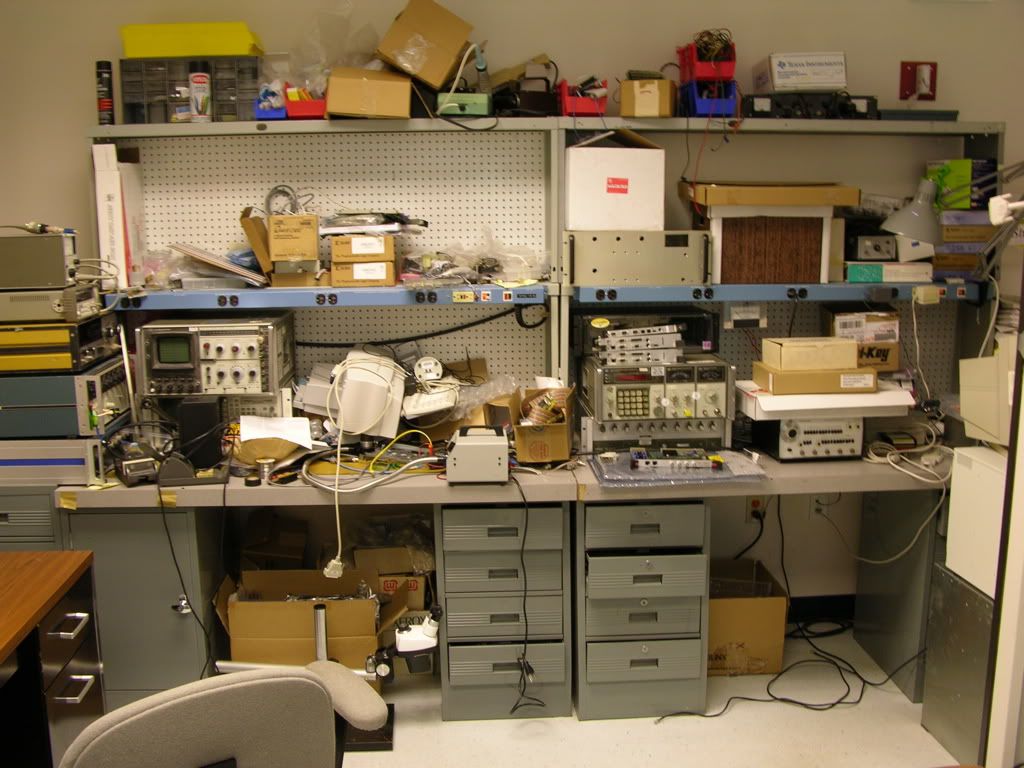
~ Here's where Dan and company used to build our SERENDIP data collection hardware ~
. . . SERENDIP Vb Installation Report
DATELINE: Berkeley, California - June 25, 2009
During the first few weeks of June 2009, several members of the Berkeley SETI Group and the Center for Astronomy Signal Processing and Electronics Research (CASPER)
visited Arecibo Observatory to install a new spectrometer system, SERENDIP Vb. This spectrometer is part of the fifth iteration of the Search for Extraterrestrial
Radio Emissions from Nearby Developed Intelligent Populations (SERENDIP) project, an effort which began at UC Berkeley in 1978.
Over the last 30 years SERENDIP spectrometer development has closely tracked the Moore's Law growth in the electronics industry, with new spectrometers processing
ever-larger bandwidths and achieving better and better spectral resolution. Searching large bandwidths is important in the SETI effort, as we can only make guesses
at the frequencies where ETIs might transmit electromagnetic signals. High spectral resolution is crucial for distinguishing narrow band astronomical signals from
astrophysical and instrumental noise, as well as radio frequency interference.
SERENDIP Vb is the most powerful spectrometer yet-built as part of the SERENDIP project. When complete, it will channelize over 2 GHz of instantaneous bandwidth
(7 beams x 300 MHz) at less than 2 Hz resolution . . . <---- read more
. . . more: Projects: SETI@home 'SERENDIP Takes a Great Leap Forward' by Amir Alexander - May 26, 2009
~ Courtesy Berkeley University & The Planetary Society ~
 BOINC Wiki . . .
Science Status Page . . . BOINC Wiki . . .
Science Status Page . . .
ID: 912744 ·  |
|
 Dr. C.E.T.I. Dr. C.E.T.I.

Send message
Joined: 29 Feb 00
Posts: 16019
Credit: 794,685
RAC: 0

|
ID: 915683 ·  |
|
 Dr. C.E.T.I. Dr. C.E.T.I.

Send message
Joined: 29 Feb 00
Posts: 16019
Credit: 794,685
RAC: 0

|
< July 13, 2009
. . . The Institution of Engineering and Technology has posted an article about volunteer computing in astronomy <------ see more here
'People's astronomy' - Published on 6 July 2009 - By Svetlana Shkolyar
'In E&T’s second International Year of Astronomy feature, we discover that destinations for future space missions may be decided not by agencies like NASA, but by groups of ordinary people engaged in citizen computing'
ET phone home excerpted:
The most well-known volunteer computing project is SETI@home, developed by the University of California, Berkeley. The Search for Extraterrestrial Intelligence (SETI) seeks out irregular signals from space from the Arecibo radio telescope in Puerto Rico. It was started recently to increase the power of the search. Volunteers download a screensaver that uses their computer’s idle time to process small segments of the telescope’s signals.
The project uses an open-source software platform for computing with volunteered resources from BOINC, the Berkeley Open Infrastructure for Network Computing, to maximise idle time and to use resources more efficiently for stand-alone projects.
BOINC allows users to decide how much idle computer power to allocate for SETI@home and how much for other scientific BOINC programs. They can ration a percentage of their computer’s power to run other useful programs such as Docking@home, in which computers process protein-binding data for medical applications, or MilkyWay@home, in which they help build a 3D model of our galaxy.
Recently, as much as 450 teraflops have been processed by SETI@home’s 200,000 users. “The potential power of volunteer computing exceeds by several orders of magnitude the power available via paradigms like cluster, grid and cloud computing,†says David Anderson, BOINC founder and SETI@home director.
 BOINC Wiki . . .
Science Status Page . . . BOINC Wiki . . .
Science Status Page . . .
ID: 917410 ·  |
|
 Dr. C.E.T.I. Dr. C.E.T.I.

Send message
Joined: 29 Feb 00
Posts: 16019
Credit: 794,685
RAC: 0

|
ID: 919830 ·  |
|
 Dr. C.E.T.I.
Dr. C.E.T.I. 

 BOINC Wiki . . .
BOINC Wiki . . . Dr. C.E.T.I.
Dr. C.E.T.I. 

 BOINC Wiki . . .
BOINC Wiki . . . Dr. C.E.T.I.
Dr. C.E.T.I. 
 BOINC Wiki . . .
BOINC Wiki . . . Dr. C.E.T.I.
Dr. C.E.T.I. 

 BOINC Wiki . . .
BOINC Wiki . . . Dr. C.E.T.I.
Dr. C.E.T.I. 

 BOINC Wiki . . .
BOINC Wiki . . . tullio
tullio 
 Dr. C.E.T.I.
Dr. C.E.T.I. 
 BOINC Wiki . . .
BOINC Wiki . . . Dr. C.E.T.I.
Dr. C.E.T.I. 

 BOINC Wiki . . .
BOINC Wiki . . . Dr. C.E.T.I.
Dr. C.E.T.I. 

 BOINC Wiki . . .
BOINC Wiki . . . Dr. C.E.T.I.
Dr. C.E.T.I. 
 BOINC Wiki . . .
BOINC Wiki . . . Dr. C.E.T.I.
Dr. C.E.T.I. 






 BOINC Wiki . . .
BOINC Wiki . . . Dr. C.E.T.I.
Dr. C.E.T.I. 
 BOINC Wiki . . .
BOINC Wiki . . . Dr. C.E.T.I.
Dr. C.E.T.I. 
 BOINC Wiki . . .
BOINC Wiki . . . Dr. C.E.T.I.
Dr. C.E.T.I. 

 BOINC Wiki . . .
BOINC Wiki . . . Dr. C.E.T.I.
Dr. C.E.T.I. 
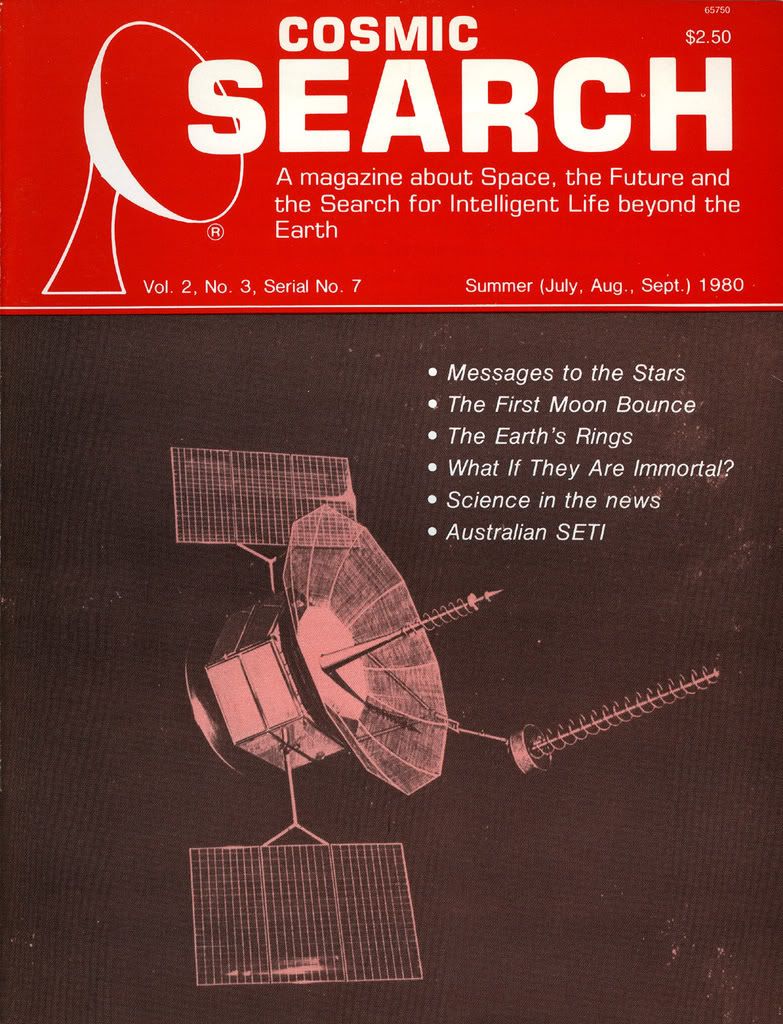
 BOINC Wiki . . .
BOINC Wiki . . . Dr. C.E.T.I.
Dr. C.E.T.I. 

 BOINC Wiki . . .
BOINC Wiki . . . Dr. C.E.T.I.
Dr. C.E.T.I. 

 BOINC Wiki . . .
BOINC Wiki . . . Dr. C.E.T.I.
Dr. C.E.T.I. 
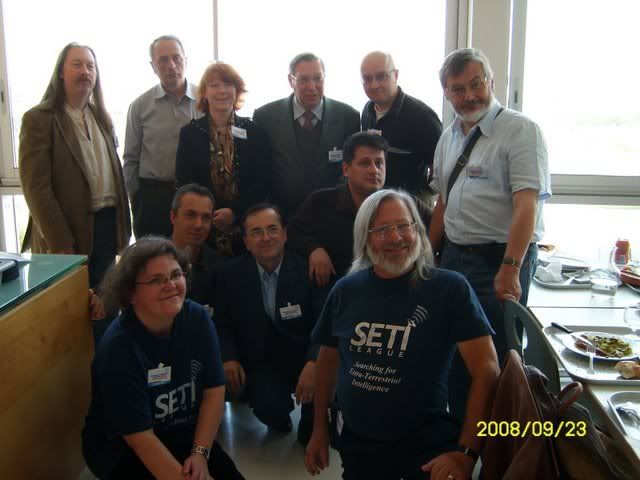
 BOINC Wiki . . .
BOINC Wiki . . . Dr. C.E.T.I.
Dr. C.E.T.I. 
 BOINC Wiki . . .
BOINC Wiki . . . Dr. C.E.T.I.
Dr. C.E.T.I. 

 BOINC Wiki . . .
BOINC Wiki . . .
